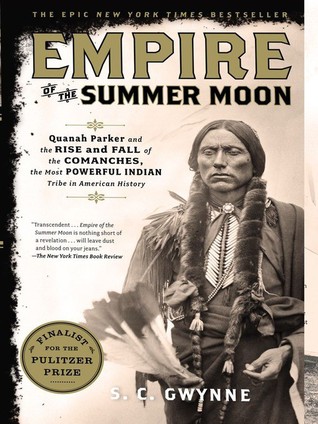More on this book
Community
Kindle Notes & Highlights
by
S.C. Gwynne
the Battle at Plum Creek,
their fate was inevitable—they saw it and met it like heroes.
by the light of what was already widely referred to in Texas as a Comanche moon. According to Parker County resident Hilory Bedford, “People on moonlit nights were in perfect dread.
immersed in this elemental world that never quite left the Stone Age—a world of ceaseless toil, hunger, constant war, and early death. But also of pure magic, of beaver ceremonies and eagle dances, of spirits that inhabited springs, trees, rocks, turtles, and crows; a place where people danced all night and sang bear medicine songs, where wolf medicine made a person invulnerable to bullets, dream visions dictated tribal policy, and ghosts were alive in the wind.
living in that random, terrifying, bloody, and intensely alive place where nature and divinity became one.
being interrogated by polite uncomprehending white men who believed in a single God and in a supremely rational universe where everything could be explained.
His home became known as Star House and still stands today, having been moved twice. One of the great, obscure treasures of the American West, it occupies the back lot of a defunct amusement park behind an Indian trading post in Cache, Oklahoma.
Star House,
he stated that the white man had pushed the Indian off the land. When Mr. Miller asked how the whites had done this, Quanah told him to sit down on a cottonwood log in the yard. Quanah sat down close to him and said “Move over.“ Miller moved. Parker moved with him, and again sat down close to him. “Move over,” he repeated. This continued until Miller had fallen off the log. “Like that,” said Quanah.
Custer’s defeat at Little Bighorn in June 1876.
Roosevelt clearly liked and admired him. “There was Quanah Parker the Comanche chief,” he wrote in his description of the wolf hunt (which had bagged seventeen wolves and coyotes) in his book Outdoor Pastimes of the American Hunter,
Roosevelt became determined to create the Wichita Mountains Wildlife Refuge,
On December 10, 1910, she was reinterred at the Post Oak Mission in Cache.
The first generations of Comanches in captivity never really understood the concept of wealth, of private property.
that most American of human traits: boundless optimism.
the lethal West, where Stone Age pagans on horseback once ruled the immemorial land.


